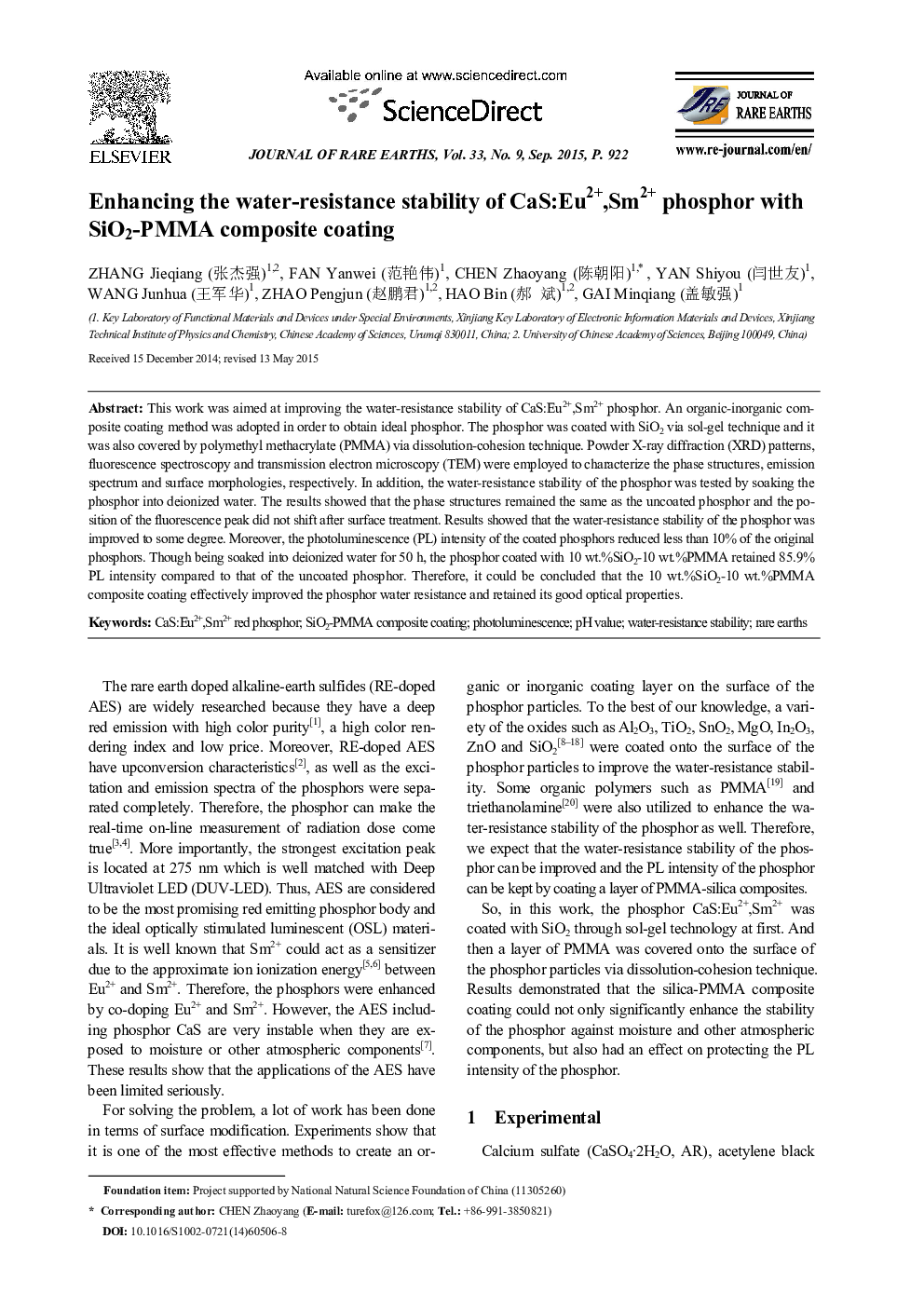| Article ID | Journal | Published Year | Pages | File Type |
|---|---|---|---|---|
| 1259948 | Journal of Rare Earths | 2015 | 5 Pages |
This work was aimed at improving the water-resistance stability of CaS:Eu2+,Sm2+ phosphor. An organic-inorganic composite coating method was adopted in order to obtain ideal phosphor. The phosphor was coated with SiO2 via sol-gel technique and it was also covered by polymethyl methacrylate (PMMA) via dissolution-cohesion technique. Powder X-ray diffraction (XRD) patterns, fluorescence spectroscopy and transmission electron microscopy (TEM) were employed to characterize the phase structures, emission spectrum and surface morphologies, respectively. In addition, the water-resistance stability of the phosphor was tested by soaking the phosphor into deionized water. The results showed that the phase structures remained the same as the uncoated phosphor and the position of the fluorescence peak did not shift after surface treatment. Results showed that the water-resistance stability of the phosphor was improved to some degree. Moreover, the photoluminescence (PL) intensity of the coated phosphors reduced less than 10% of the original phosphors. Though being soaked into deionized water for 50 h, the phosphor coated with 10 wt.%SiO2-10 wt.%PMMA retained 85.9% PL intensity compared to that of the uncoated phosphor. Therefore, it could be concluded that the 10 wt.%SiO2-10 wt.%PMMA composite coating effectively improved the phosphor water resistance and retained its good optical properties.
Graphical AbstractIt can be observed that the pH values of the uncoated and coated samples solutions were eventually stabilized at 11.28, 9.57 and 9.30 respectively. Results show that the layer of SiO2-PMMA composite coating can make a big difference in improving the water-resistance stability of the CaS:Eu2+,Sm2+ phosphorFigure optionsDownload full-size imageDownload as PowerPoint slide
